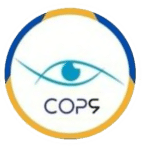Early detection of a delay or disorder in development and communication allows the process of treating psychomotor disorders to begin quickly. This psychomotor therapy addresses many neurological conditions.

The COP9 team presents here a global approach to psychomotor rehabilitation that we offer in our multidisciplinary center. Continue reading to learn more about the rehabilitation of disorders (developmental disorders, neurological disorders, delay in development, etc.) thanks to the professional follow-up care of our psychomotor therapists.
Treatment of psychomotor disorders: 4 types of rehabilitation
Our COP9 center proposes a multidisciplinary care program to accompany you in the treatment of psychomotor disorders. These disorders are neurodevelopmental in nature and can find their roots in psychological, genetic, neurobiological factors, etc.
The psychomotor disorder will then influence actions, relationships with others, work… In short: the daily life of people affected is impacted by this acquisition disorder.
Psychomotor therapy sessions have a therapeutic objective. The psychomotor therapist diagnoses the patient and carries out a psychomotor assessment. Thanks to this, the therapeutic program is created in order to work on an adapted psychomotor rehabilitation.
1- Visual-perceptual rehabilitation
The objective of this rehabilitation is to allow the patient to recognize objects based on their shapes, colors and sizes. This is known as the visual identification function.
For example, knowing how to recognize similarities or a simple object in a distracting setting are visual-perceptual tasks that the child will have to analyze in both school and personal spheres.
2- Visual-praxis rehabilitation
The treatment of psychomotor disorders such as dyspraxia focuses on the link between the body and brain commands. More precisely, the child will work with their psychomotor therapist on body schema, lateralization, global motor skills (large gestures) and fine motor skills (precise gestures).
In addition to psychomotor therapy, the dyspraxic child can consult an orthoptist, a speech therapist and an occupational therapist to complete their visual-praxis rehabilitation.
3- Visual-spatial rehabilitation
This rehabilitation is based on the function of orientation and location in the environment. It is a mental function that relies on the sight of objects where we estimate their position both around and in relation to ourselves. The perception of movement in one’ s space is also taken into account during visual-spatial rehabilitation.
For example, the child will be able to project themself in their environment, and structure it according to what they observe and what surrounds them. Reading and following a map, understanding how a room and the others around it are structured… Playful situations are set up by our psychomotor therapists during the treatment sessions for psychomotor disorders, always with substantive work on the memory.
4- Visual-attention rehabilitation
The aim of visual-attention rehabilitation is to help the child improve their ability to focus visually. The visual analysis of words is then worked on in a playful way, since the young patient has difficulties in controlling their focus.
For example, this visual attention disorder will cause difficulties when reading. The visual-attention span is developed little by little during the sessions so that more letters are identified at each visual fixation.
Who is concerned by the treatment of psychomotor disorders?
Dr. Stephanie Zwillinger’s COP9 team wishes to remind you that the treatment of psychomotor disorders is performed on medical prescription. The psychomotor therapy sessions must be performed by a psychomotor therapist, whose training is validated by a State Diploma. Only this professional can perform psychomotor tests and diagnose any psychomotor instability.
Treating psychomotor disorders for young children:
- a delay in cognitive and emotional development or behavior;
- psychomotor delay, such as walking, fine motor skills, cleanliness, etc.
Treating psychomotor disorders at any age:
- the presence of tonic-emotional disorders such as instability, hyperactivity, slowness or passivity;
- difficulties in adapting to the disability;
- reduction of autonomy with advancing age;
- lateralization problems;
- difficulties in organizing time and/or one’s environment.
Whether you are an adult, or a child or teenager, it is never too early or late to make an appointment!
What are the profiles followed in the treatment of psychomotor disorders?
Our multidisciplinary COP9 team accompanies you in your therapeutic approach to the treatment of psychomotor disorders. The psychomotor team first performs a series of precise examinations before proposing any course of treatment to the patient.
This psychomotor care proposes treatment to the following profiles:
- psychomotor delay, with acquisition disorders;
- learning disabilities such as the “DYS”, ADD (attention deficit disorder), /ADHD, causing attention disorders;
- autism spectrum (any form of autism);
- behavioral disorders resulting from a psychomotor disorder;
- specific disorders of emotional or communication regulation (anxiety, stress…);
- people with disabilities or degenerative diseases such as Alzheimer’s;
- the consequences of an accident, trauma, life event such as burnout, major surgery, stroke, etc.
The care provided supports patients in the acquisition of body image, but also in school learning, key stages from childhood to adolescence. If necessary, psychological help can be offered to ensure the child’s proper development.
In conclusion on the treatment of psychomotor disorders, it is important to know that at COP9, everything is done in coordination with the parents, the child, and the health professionals, but also with the paramedical professions. These therapeutic contributions are important in the development of muscle tone and the structuring of the body schema developed during the sessions.
